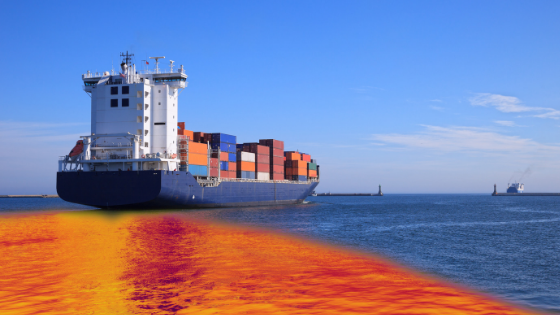Just one gallon of oil can taint a million gallons of water, according to the U.S. Environmental Protection Agency. There are inherent risks in oil exploration, extraction, transport, and storage; spills can have serious adverse and potentially long-term effects on the environment, drinking water, human and wildlife populations. Prevention is key, and preparation is part of that.
The Threat of Oil Spills
The development of best practices for onshore and offshore spills over the years has come about through the combined efforts of regulators and industry professionals committed to preventing these incidents. Many people think of crude oil and the environmental damage it can cause. However, oil spill prep applies to all kinds of oil, including crude, refined or waste oils, vegetable oils, and synthetic oils. And it applies to all places where oil is present, from extraction to final destination and use.
Benefits of Preparation
Spillers are legally responsible for clean up on land (e.g, a refinery, pipeline owner or operator, or other oil consumers) and sea (e.g, an oil tanker, pipeline or oil rig owner or operator). By reducing chances of a spill, companies may reduce the potential for large financial losses; preparation can be cheaper than the payout for cleanup and restoration.
In some cases, those judged to be responsible for an oil spill also risk considerable legal and regulatory costs, like fines, lawsuits, etc. And finally, spill preparation demonstrates a commitment to shared resources and the community a company operates in, which can have a positive net effect on relationships with local stakeholders. Additionally, it is beneficial to perform petroleum inspection to help reduce health and safety risk as well as to ensure the integrity of your oil products.
Best Practices in Oil Spill Prevention
While it’s impossible to plan for every possible scenario in which an oil spill might occur, responsible planning and preparation for such an event can go a long way in mitigating damage and minimizing associated costs. While local, state, and federal regulations may apply, there are some best practices that apply broadly. Preparation keeps all those involved aware of the potential for oils pills and risk factors; it also goes a long way in minimizing spills when they do happen, because people can act quickly, knowing what to do.
Assessment
It’s important to first conduct an assessment to determine where the threats are. Look at physical facilities as well as procedures. Inspect storage containers, undergo tank calibration, and audit wear and tear on equipment. Look for leaks, cracks, or other signs of potential trouble. Review overfill prevention measures; what additional policies and procedures might be needed?
Consider additional risk factors when exploring oil spill preparation measures. For example, what’s the proximity of features like valleys or waterfront that can affect or be affected by a spill. Also consider the likelihood of a spill as a result of natural disasters, like hurricanes or earthquakes.
Collaboration and Cooperation
After conducting an assessment, it’s time to develop the nuts and bolts of an oil spill preparation plan. There are many local, state, and federal offices ready, willing, and able to help. Talk to third-party cleanup companies and experts. Explore the resources developed by industry task forces in the wake of the Deepwater Horizon spill in 2010. Rely on them and their expertise, especially considering that if there is a spill, these are the agencies who will also be involved in cleanup efforts. Start developing relationships with them before an emergency happens; invite their expertise in oil spill prevention and preparation planning.
Here are some additional recommendations, based on industry and federal resources:
- Identify the various types of spills and spill locations that are possible based on the assessment of risk. Take steps to minimize that risk, whether it’s more frequent inspections and maintenance activities or facilities improvements, for example. Develop a plan of response for each type of spill and a spill at each vulnerable location.
- Explicitly outline who’s responsible for what actions in the plan. It can be helpful to make a flowchart of action. Be sure to add reporting requirements and procedures (who make calls, who gets called, and what information is provided). Scalable plans are important. Planned and unannounced drills can identify holes in the plan, and ensure precious time isn’t lost in the event of an actual oil spill.
- Gather any necessary documents needed to address a spill. Include site plans or diagrams, lists of contact people with primary and alternate phone numbers, inspection logs, documented standards and requirements for normal operation, employee education and training logs related to spill preparation training, and confirmation of management approval on the plans. This makes regular review and revision of prevention and response measures more efficient.
- With a thorough and robust oil spill prevention and mitigation plan in place, companies will be better prepared to address problems as soon as they occur. Regular review and practice keep all involved parties at the ready.
Related Articles:
